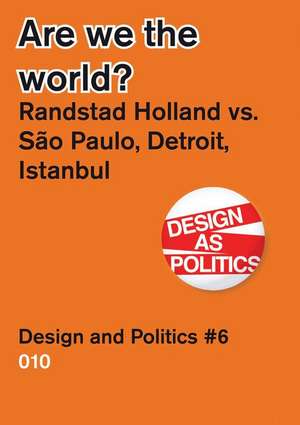Are We the World?: Randstad Holland vs. Sao Paolo, Detroit, Istanbul, Design & Politics No. 6
Editat de Wouter Van Stiphout, Henk Ovink, Eilen Wierengaen Limba Engleză Hardback – 30 ian 2015
Preț: 289.38 lei
Nou
Puncte Express: 434
Preț estimativ în valută:
55.39€ • 60.19$ • 46.56£
55.39€ • 60.19$ • 46.56£
Carte indisponibilă temporar
Doresc să fiu notificat când acest titlu va fi disponibil:
Se trimite...
Preluare comenzi: 021 569.72.76
Specificații
ISBN-13: 9789064507878
ISBN-10: 9064507872
Pagini: 280
Dimensiuni: 170 x 236 x 25 mm
Greutate: 0.76 kg
Ediția:12001
Editura: Nai010 Publishers
ISBN-10: 9064507872
Pagini: 280
Dimensiuni: 170 x 236 x 25 mm
Greutate: 0.76 kg
Ediția:12001
Editura: Nai010 Publishers
Descriere
Part six of the "Design and Politics" series compares the Randstad region with Sao Paulo, Istanbul and Detroit, and speculates about alternative visions for city planning and idealistic architectural intervention for the cities involved. "Are We the World?" is not only a plea for a central role for city planning, and an active exchange of ideas, but primarily for new political involvement. For decades, Dutch design has been exported across the globe. After a successful period in which the polycentric Randstad model was held in high esteem, followed by the fresh, modern approach of the SuperDutch architects, the resources and expertise of organizations such as NAI, IABR and DutchDFA are now being employed for projects in Asia and South America. But, are Dutch ingenuity, pragmatism and process management the ideals that the explosively expanding or shrinking cities of the twenty-first century are most in need of? What does the Dutch model offer global cities and what can the Netherlands itself learn?
